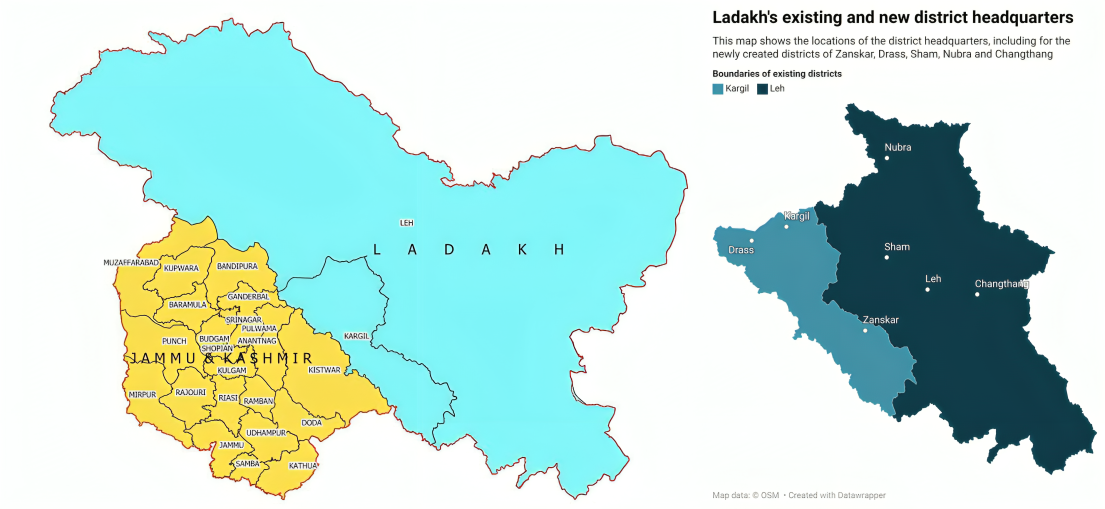Formation of 5 New Districts in Ladakh | 31 Aug 2024
Why in News?
Recently, the Ministry of Home Affairs Minister granted "in-principle approval" for the formation of five new districts in Ladakh, increasing the Union Territory's total number of districts to seven.
- This move, aimed at improving governance and development in the region, has been widely discussed and welcomed by various stakeholders.
What are the New Districts in Ladakh and Their Purpose?
- Significance: Ladakh is one of India’s largest and least populated Union Territories. The current administrative structure, with just two districts Leh and Kargil has struggled to address the needs of its vast and difficult terrain.
- Due to its large area and inaccessibility, the existing administration faced challenges in reaching grassroots levels effectively.
- The new districts are expected to alleviate these challenges by providing more localised administrative units.
- Ladakh's geopolitical significance and strategic location have made it a focus of development efforts, aiming to enhance both civilian and military infrastructure.
- New Districts: The five new districts are Zanskar, Drass, Sham, Nubra, and Changthang.
- After Article 370's removal in 2019, Ladakh became a Union Territory under the Union Home Ministry's direct administration.
- The creation of these districts aims to bring governance closer to the people, ensuring that benefits and services reach even the most remote areas.
- Ladakh is part of the Prime Minister’s Development Package (PMDP), which includes significant funding and infrastructure projects aimed at the region's growth.
- The creation of new districts will further support these developmental efforts.
- Next Steps: The Home Ministry has directed the Ladakh administration to form a committee to assess various aspects of the new districts, including headquarters, boundaries, structure, and staffing.
- The committee is required to submit a detailed report within three months, after which the final proposal will be reviewed by the Union Home Ministry for further action.
- Political and Public Reactions: Political parties questioned whether the new districts would have elected Autonomous Hill Development Councils, like Leh and Kargil, to ensure meaningful local governance.
- While many welcomed the move, some social activists and former politicians called for greater political representation and functional autonomy to make the new districts effective in local governance.
How New Districts are Created in India?
- The power to create, alter, or abolish districts lies with State governments, done either through an executive order or by passing a law in the State Assembly.
- States believe smaller districts improve administration and governance.
- The Centre has no role in creating or altering districts but is involved when a State wants to change a district’s name, requiring clearances from multiple agencies.
- Trends in District Creation: According to the 2011 Census, there were 593 districts in India. Between 2001-2011, 46 new districts were created by States.
- As of 2024, there are currently 718 districts in the country, partly due to the bifurcation of Andhra Pradesh into Andhra Pradesh and Telangana in 2014, with Telangana having 33 districts and Andhra Pradesh having 13 districts (the state now has 26 districts).

